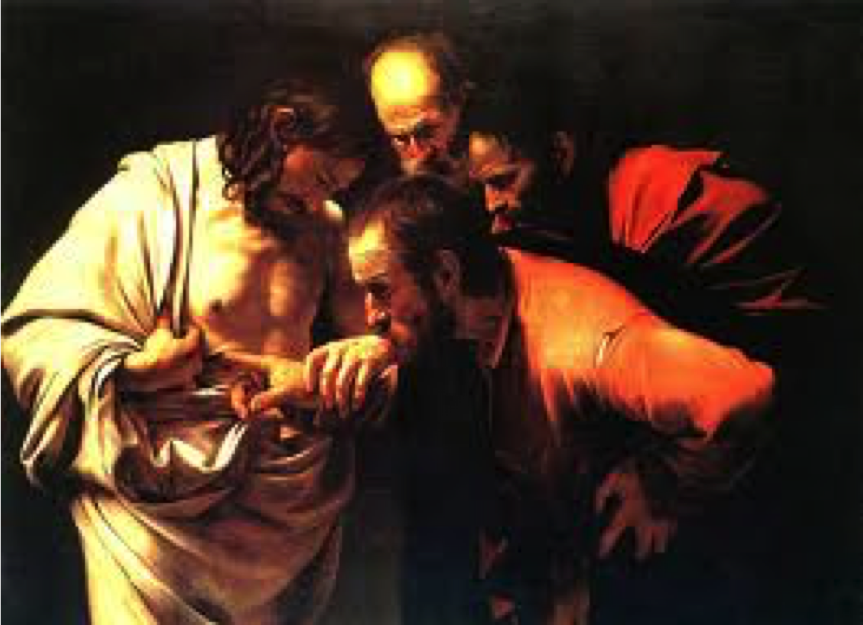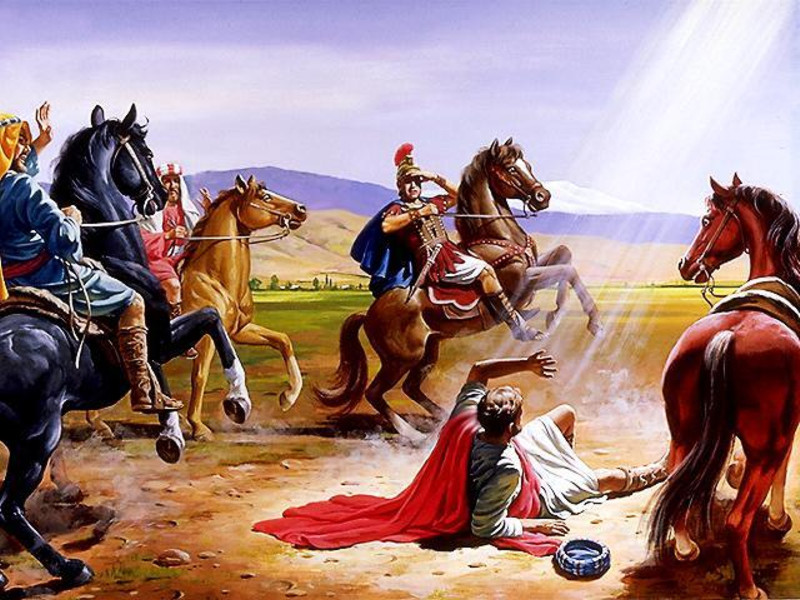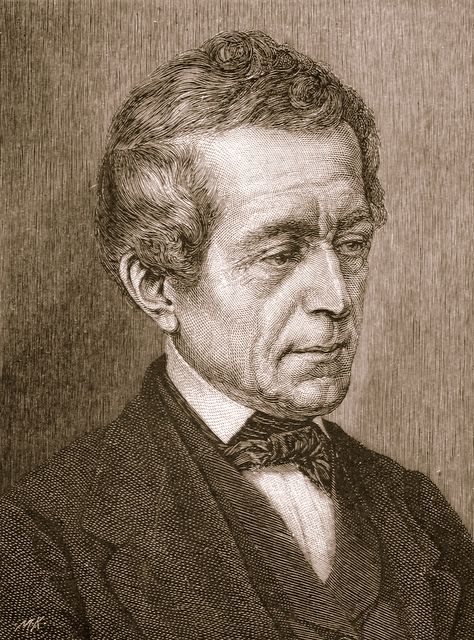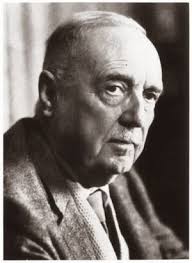SPECIAL REVELATION
We previously said that the term “revelation” can be understood in its broad sense as a “communication from God” or its narrow sense as the “disclosure of something previously unknown.”
These few segments about Jesus’ resurrection are part of what theologians call “special revelation.” This is revelation about God that is not readily apparent to the every person. We said there are three different kinds of what theologians call “special revelation”:
• The revelation of Jesus Christ
• Scripture
• Particular revelation to individuals
The most important of these is the revelation of Jesus Christ. This includes the understanding that Jesus of Nazareth was more than a good man or wise teacher: He was the Son of God. How do we know this? Well, there is reliable historical evidence for the resurrection of Jesus from the dead.
“THREE KEY ASPECTS” OF THE RESURRECTION NARRATIVE
We are presently looking at “three key aspects” of the resurrection narrative. The question before us would be, “Is the resurrection of Jesus the best explanation for these three phenomena?”
1. The empty tomb was discovered by a group of his women followers three days after the crucifixion (Sunday).
2. There were post-mortem appearances of Jesus to various people over a 40-day period.
3. There was no existing tradition in the Jewish culture of that day about an individual being resurrected.
So we need to (1) examine how accurate these three facts are and then (2) weigh the resurrection narrative against competing theories to see if they are more plausible.
REVIEW
What we’ve learned so far:
1. Two blogs ago, we established that Jesus actually died and was buried in Joseph of Arimathea’s tomb.
2. In the last blog, we demonstrated that Jesus’ tomb was found to be empty by a group of his women followers.
There were multiple, independent sources within the first few years of Jesus’ death who attested to both of these facts. At this website, we think that Jesus’ resurrection is the best explanation for these two facts.
We now want to look at the third key aspect of the resurrection narrative: Were there post-mortem appearances of Jesus to various groups of people?
THE OLDEST KNOWN ORAL TRADITION GIVEN TO PAUL WITHIN TWO YEARS OF JESUS’ DEATH
In 1 Corinthians 15:3-8 (RSV), Paul tells the believers at Corinth, Greece:
3 For I delivered to you as of first importance what I also received, that Christ died for our sins in accordance with the scriptures,
4 that he was buried, that he was raised on the third day in accordance with the scriptures,
5 and that he appeared to Cephas, then to the twelve.
6 Then he appeared to more than five hundred brethren at one time, most of whom are still alive, though some have fallen asleep.
7 Then he appeared to James, then to all the apostles.
8 Last of all, as to one untimely born, he appeared also to me.
This was definitely an authentic letter written by Paul. It was an astounding claim for Paul to report that several different groups saw post-mortem appearances of Jesus of Nazareth. It was just as astounding for a former Jewish zealot who put Christians to death to suddenly claim he too had seen a post-mortem appearance of Jesus.
THREE LINES OF EVIDENCE FOR POST-MORTEM APPEARANCES
Here are three main lines of evidence establishing that the post-mortem appearances of Jesus are historically reliable:
1. PAUL’S LIST OF EYEWITNESSES TO JESUS’ RESURRECTION APPEARANCES GUARANTEES THAT SUCH APPEARANCES OCCURRED.
Appearance to Peter
This post-mortem appearance of Christ to Peter is not mentioned anywhere in the four gospels written by Matthew, Mark, Luke or John. However, it is mentioned in this very old tradition that was taught to Paul as a new convert within two years of Jesus’ death (1 Corinthians 15:3-8). In this passage, Paul refers to “Cephas,” another name for Peter.
In Galatians 1:18 it says that, three years after his Damascus road experience, Paul spent two weeks with Peter in Jerusalem. So Paul would have known about this event.
Luke 24:34 also attests to the fact that Jesus was risen and appeared to Simon, meaning Peter. Luke based his statement on a separate but old tradition that he had received.
The most skeptical New Testament scholars are convinced that Peter saw, or at least genuinely believed that he saw, Jesus alive from the dead.

Appearance to the Twelve Disciples
Even though Judas was absent, this group of disciples still carried the title of “the Twelve.” There is no better documented post-mortem appearance of Jesus than this.
This account is also mentioned in the very early oral tradition that Paul received as a new convert within two years of Jesus’ death. Paul would know this because he met on several occasions with members of the the Twelve.
We also have two independent sources that make the same claim. In Luke 24:36-42, Luke tells us that, at that appearance before the disciples, he showed them the wounds in his hands and feet and ate fish with them.
There is very little doubt about this particular event. It was mentioned in very old oral tradition within two years of Jesus’ death. It was described by Luke and John, each using very old but independent sources. And it was confirmed by Paul who had contact with the disciples on several occasions.
Appearance to 500 Men at Once
It is surprising that Paul mentions this in his letter to the believers at Corinth. This instance is not mentioned anywhere else in the entire New Testament.
It might normally cause some people to be skeptical about the claim that Jesus appeared to 500 brethren at one time, but it seems obvious that Paul had personal contact with some of these 500 witnesses because he was able to tell us that a few had already died but most were still alive.
Cambridge University New Testament scholar C.H. Dodd tells us, “There can hardly be any purpose in mentioning the fact that most of the 500 are still alive, unless Paul is saying, in effect, ‘The witnesses are there to be questioned.’” C.H. Dodd, “The Appearances of the Risen Christ: A Study in the Form Criticism of the Gospels,” in More New Testament Studies (Manchester: University of Manchester, 1968), 128.
If the event had never taken place, Paul would never have mentioned the fact that witnesses were still alive who could be questioned about this experience. It would have undermined his credibility. He could have been exposed as making a fraudulent claim.
The appearances of Jesus occurred in Jerusalem, then in Galilee, then again in Jerusalem. The appearance to 500 men might have occurred outdoors in Galilee on a hillside where there was room to accommodate such a gathering. The disciples were mainly in Jerusalem at that time and focused their writing on events in that city, thus no mention in the gospels of this appearance to the 500.
Appearance to James
In this very early tradition given to Paul, 1 Corinthians 15:7 says, “Then he appeared to James.”
In reading passages like Mark 3:21, 31-35 and John 7:1-10, it looks like none of Jesus’ brothers were convinced that he was the Son of God, the Messiah or even a prophet. However, Luke tells us in Acts 1:14 that his brothers were worshipping with other believers in the upper room after Jesus’ ascension into heaven. So it appears that they were converted to belief in Christ during that time period.
The next time we hear about one of them is in Acts12:17. Peter is delivered from prison by an angel and his first instruction to his fellow believers was for them to “Tell James,” Jesus’ younger brother.
Three years after his Damascus road experience, Paul said Galatians 1:18-19 that he went to Jerusalem for two weeks, where he visited with Peter and “none of the other apostles — only James, the Lord’s brother.” This would imply that James had become an apostle and was numbered among the Twelve.
Fourteen years later, Paul visited Jerusalem again and claimed that three men had become “pillars of the Church”: James, Peter and John (Galations 2:9).
In Acts 21:18-19, Paul and his cohorts arrive in Jerusalem and go to see James and the council of elders to whom he gave a “report” of his travels. This indicates to some that James might have been the head of the church in Jerusalem by that time. That is the last mention of James in the New Testament.
The Jewish historian Josephus said that James was eventually stoned to death illegally by the Sanhedrin around 60 A.D. because of his belief in Jesus. (Josephus, Antiquities of the Jews 20.200)
In addition, Jesus’ other brothers became believers and were active in ministry (1 Corinthians 9:5).
What caused this remarkable conversion in James and the other brothers of Jesus? Paul tells us in the oral tradition that was given to him “then he appeared to James.” This would be enough to convert a lot of people.
German New Testament critic Hans Grass tells us that the conversion of James is one of the surest proofs of the resurrection of Jesus. Hans Grass, Ostergeshehen und Osterberichte, 4th ed. (Gottingen: Vandenhoeck & Ruprecht,1974), 80.
Appearance to “All the Apostles”
The only mention of this post-mortem appearance of Jesus is in the oral tradition given to Paul within two years of Jesus’ death (1 Corinthians 15:3-8). Keep in mind that Paul had personal contact with the apostles on several occasions, so he would be in a position to verify this oral tradition.

Appearance to Saul of Tarsus
In Acts 9:1-9, Luke conveys that Paul tells the story of his own conversion. On his way to Damascus to torture, kill or arrest more Christians, Saul (or Paul) is blinded by a light and hears a voice. He asks who it is. The voice answers, “I am Jesus.”
Saul had been a rabbi, a Pharisee and was respected by the Jewish people as a leader. He was doing everything he could to extinguish Christianity. He left all of this to take on a life of poverty and preach the gospel of Christ. He was whipped, beaten, stoned, left for dead, shipwrecked three times, and in constant danger. He was finally executed in Rome. He did all of this because of what happened on that road outside of Damascus — a post-mortem appearance of Jesus Christ, which is the last thing he would have expected.
2. THE GOSPEL ACCOUNTS PROVIDE SEVERAL INDEPENDENT SOURCES WHO SAY THEY SAW POST-MORTEM APPEARANCES OF JESUS.
One thing to remember is that each gospel writer used an early, independent source not used by the others to establish the fact of Jesus’ resurrection.
German New Testament scholar Wolfgang Trilling said this:
“From the list of 1 Cor. 15 the particular reports of the gospels are not to be interpreted. Here may be of help what we said about Jesus’ miracles. It is impossible to ‘prove’ historically a particular miracle. But the totality of the miracle reports permits no reasonable doubt that Jesus in fact performed ‘miracles.’ That holds analogously for the appearance reports. It is not possible to secure historically the particular event. But the totality of the appearance reports permits no reasonable doubt that Jesus in fact bore witness to himself in such a way.” Wolfgang Trilling, Fragen zur Geshichtlichkeit Jesu (Düsseldorf: Patmos Verlag, 1966), 153 as found in William Lane Craig, Reasonable Faith (Wheaton, IL: Crossway, 2008), 380.
We previously mentioned that the post-mortem appearance to Peter was independently reported by Paul and Luke (1 Corinthians 15:5; Luke 24:34) and that even critics acknowledge this fact.
As we said before, Paul, Luke and John each tell us about Jesus’ appearance to the Twelve (1 Corinthians 15:5; Luke 24:36-43; John 20:19-20). Even though they might have different interpretations of this event, the skeptics all agree that something happened in this case.
Matthew and John testify of Jesus’ post-mortem appearance to the women disciples (Matthew 28:9-10; John 20:11-17).
Mark, Matthew and John bear witness of Jesus’ post-mortem appearance to the disciples in Galilee (Mark 16:7; Matthew 28:16-17; John 21).

German New Testament scholar Gerd Lüdemann states, “It may be taken as historically certain that Peter and the disciples had experiences after Jesus’ death in which Jesus appeared to them as the risen Christ.” Gerd Lüdemann, What Really Happened to Jesus? translated by John Bowden (Louisville, KY: Westminster John Knox Press, 1995), 80.
There is so much evidence that critics are forced to create a psychological explanation of some kind. Some critics like to call all of these appearances group hallucinations, yes, even the simultaneous appearance to 500 men, but no credible scholars deny that these events actually occurred.
3. THE RESURRECTION APPEARANCES WERE PHYSICAL, BODILY APPEARANCES.
a. New Testament writers drew a distinction between an “appearance” by Jesus and seeing Jesus in a “vision.”
• Any vision mentioned in the New Testament would be a communication from God that occurs solely within the mind of that individual receiving it. It is manifested internally, but it is a genuine communication from God.
• An appearance is a physical manifestation outside the mind or in the external world.
In Acts 7, Stephen experienced a vision in which he saw a man who was not physically there, but the vision was a communication from God nevertheless.
Whereas, Paul experienced an appearance of Jesus on the Damascus road because it was manifested to him externally.
b. The gospel accounts demonstrate that the post-mortem appearances of Jesus were physical and bodily.
The New Testament believers had very early oral traditions which indicated that the post-mortem appearances of Jesus were physical, bodily appearances that more than one person could see at a time. It is very unlikely that these early traditions were mangled or corrupted in such a short time. Here is one appearance of Jesus to the disciples:
“36 As they were saying this, Jesus himself stood among them.[a] 37 But they were startled and frightened, and supposed that they saw a spirit. 38 And he said to them, “Why are you troubled, and why do questionings rise in your hearts? 39 See my hands and my feet, that it is I myself; handle me, and see; for a spirit has not flesh and bones as you see that I have.”[b] 41 And while they still disbelieved for joy, and wondered, he said to them, “Have you anything here to eat?” 42 They gave him a piece of broiled fish, 43 and he took it and ate before them.”
In Luke 24:36-43, Luke tells us that, at that appearance before the disciples, he showed them the wounds in his hands and feet and ate fish with them. He said, “Look at my hands and my feet. It is I myself! Touch me and see; a ghost does not have flesh and bones, as you see I have.”
He did this to demonstrate to them that this was clearly a bodily, and not a spiritual, resurrection. He also wanted them to know that he was the same Jesus who had been crucified.
b. Paul described physical resurrection bodies that would be oriented toward priorities of the Spirit of God.
Paul did not confine himself to merely describing the immortality of the soul. In 1 Corinthians 15:20-23, Paul told us that Christ was the first whose body would be resurrected and that we would be raised from the dead in this same manner:
“20 But in fact Christ has been raised from the dead, the first fruits of those who have fallen asleep. 21 For as by a man came death, by a man has come also the resurrection of the dead. 22 For as in Adam all die, so also in Christ shall all be made alive. 23 But each in his own order: Christ the first fruits, then at his coming those who belong to Christ.”
In 1 Corinthians 15:42-44 (RSV), Paul also described what each person’s “resurrection body” would be like and compared it to our present “earthly bodies”:
“42 So will it be with the resurrection of the dead. The body that is sown is perishable, it is raised imperishable; 43 it is sown in dishonor, it is raised in glory; it is sown in weakness, it is raised in power; 44 it is sown a natural body, it is raised a spiritual body.”
This passage is saying:
• Our earthly bodies are: “perishable, dishonorable, weak and natural (dominated by, or oriented toward human nature and our own selfish desires).”
• Our resurrection bodies will be: “imperishable, glorious, powerful and spiritual (oriented toward the Spirit of God and his priorities).”
Should we take “spiritual” in a wooden, literal sense and assume that our resurrection bodies will be invisible, immaterial bodies? No. In using the word “spiritual,” Paul was saying that our earthly bodies have been oriented toward human nature and our own selfish desires. For example, in 1 Corinthians 2:14 (KJV) “natural” is described in this way:
“But the natural man receiveth not the things of the Spirit of God: for they are foolishness unto him: neither can he know them, because they are spiritually discerned.”
In referring to “spiritual,” Paul said our resurrection bodies would be oriented toward the priorities that Spirit of God has, not that we would literally be immaterial, invisible spirits. He was talking about a new focus or priority directed toward spiritual matters.
So based on a. and b. above, the resurrection appearances of Jesus had to be physical and bodily.
WHAT ABOUT THE “HALLUCINATION HYPOTHESIS”?
There are scriptural critics who do not believe that Jesus actually rose from the dead.
Since the post-mortem appearances of Jesus were so well documented with early, multiple, independent sources and since the disciples were willing to suffer torture and death in such gruesome ways for their testimony of Jesus, most New Testament scholars agree that something happened in each instance. It’s obvious to every major New Testament scholar in the world today that the disciples were convinced that they saw and heard and even touched Jesus.
So in order to deny Jesus’ bodily resurrection, the only alternative left is to provide a psychological explanation to describe how the disciples might have been deluded.

In 1835, David Friedrich Strauss presented a theory that the disciples experienced hallucinations that were brought on by the strain of guilt and failure to faithfully support their Lord in his hour of need while he was alive. Even Saul of Tarsus was said to have experienced guilt and suffered under the strain of persecuting Christians. This guilt and strain resulted in a series of hallucinations and even group hallucinations in which they desired to obtain forgiveness directly from Jesus.

This view was perpetuated by men like theologian Rudolph Bultmann in the 1900s. The hallucination hypothesis was the dominant perspective in the field of theology throughout the 1800s and most of the 1900s. The most well-known proponent of this view in the world today is German New Testament scholar Gerd Lüdemann.
INFERENCE TO THE BEST EXPLANATION
We described “inference to the best explanation” in the blog entitled, “What is sufficient evidence, and how do I know if something is true?” This is a method of historical inquiry in which there are competing theories to explain observable data and historians infer which explanation would be most credible based on the facts available to them and an objective set of criteria for comparing those theories.
So the historian would first identify a pool of live options (possible theories to explain facts or observable data). He or she would then apply a set of objective criteria to determine the “best explanation.” These are the criteria:
1. Explanatory Scope: Which theory explains the most facts or the widest range of observable data? The “hallucination hypothesis” has a more narrow explanatory scope. It does not explain the empty tomb (part of our facts or observable data). It doesn’t explain the origin of the disciples’ belief in Jesus’ resurrection. For example, there was nothing in their first-century Jewish culture that would suggest such a thing.
2. Explanatory Power: Which theory makes the data more probable than the others do. The “hallucination hypothesis” lacks this as well. Jesus appeared multiple times to different and varied groups of people, in a variety of circumstances and locations. Claiming there was a chain reaction of hallucinations that spread among the Twelve, let alone among 500 men who saw him simultaneously, lacks explanatory power.
3. Plausibility: The degree to which “accepted knowledge” (i.e., includes background knowledge and the specific set of facts about this case) implies the truth of a hypothesis versus the degree to which it implies the negation of that hypothesis (i.e., its falsehood). We don’t have enough information about the disciples to make a plausible case for a guilt complex that resulted in hallucination. Paul wasn’t part of any of those groups who saw Jesus in Jerusalem and Galilee. He was on the road outside of Damascus, on his way to persecute more Christians. Lüdemann’s attempt to apply guilt theories of Jung and Freud to the disciples and to Paul is based on too little data to draw such conclusions.
4. Less Ad Hoc: Which theory is less ad hoc? “Ad hoc” refers to a theory for which there isn’t any independent evidence or reasoning to believe that it’s true, and instead you must contrive or invent a hypothesis just to explain a set of unsupported facts. Lüdemann’s hallucination hypothesis assumes a great deal about the disciples and particularly Peter. He says that Peter was so obsessed with guilt that he projected a hallucination of Jesus, and that by the power of suggestion this spread to the other disciples. He claims that Saul had a secret attraction to Christianity. This is ad hoc!
5. Accord With Accepted Beliefs: In weighing any theory that tries to explain a set of facts, the best theory is one that contradicts fewer accepted beliefs. Accepted beliefs of New Testament scholars today are Jesus received an honorable burial in Joseph of Arimathea’s tomb, that Jesus’ tomb was discovered to be empty by a group of women, that psychoanalysis of historical first-century figures is not feasible, that Saul was content with his life under Jewish law, that the New Testament draws a distinction between appearance and a vision. These are ways in which Lüdemann’s theory does not accord with accepted beliefs.
6. Comparative Superiority: The theory exceeds its rival hypotheses in meeting the five criteria mentioned above. The “hallucination hypothesis” is still a live option today. In that regard, it has outlasted all of the theories based on natural explanations. But the important question is, “Based on the above five criteria, is the Hallucination Hypothesis a better explanation than the Resurrection Hypothesis?” With so many different groups and individuals in different circumstances and locations experiencing post-mortem appearances of Jesus, even with Saul who was on his way to persecute more Christians in Damascus, a psychological seems less likely than the simpler Resurrection Hypothesis.
CONCLUSION
Based on the above three lines of evidence, the post-mortem appearances of Jesus are historically reliable and these were physical, bodily appearances that groups of people witnessed simultaneously, not spiritual visions or even hallucinations in one person’s mind.
FURTHER READING
These three lines of evidence about post-mortem appearances of Jesus were obtained from Dr. William Lane Craig in his book Reasonable Faith.
For further insight on the resurrection, read N.T Wright’s exhaustive study entitled The Resurrection of the Son of God.

